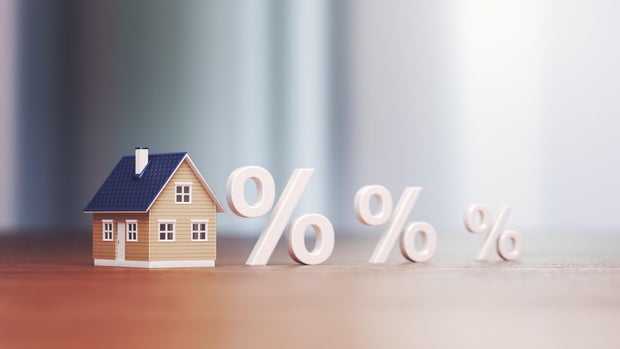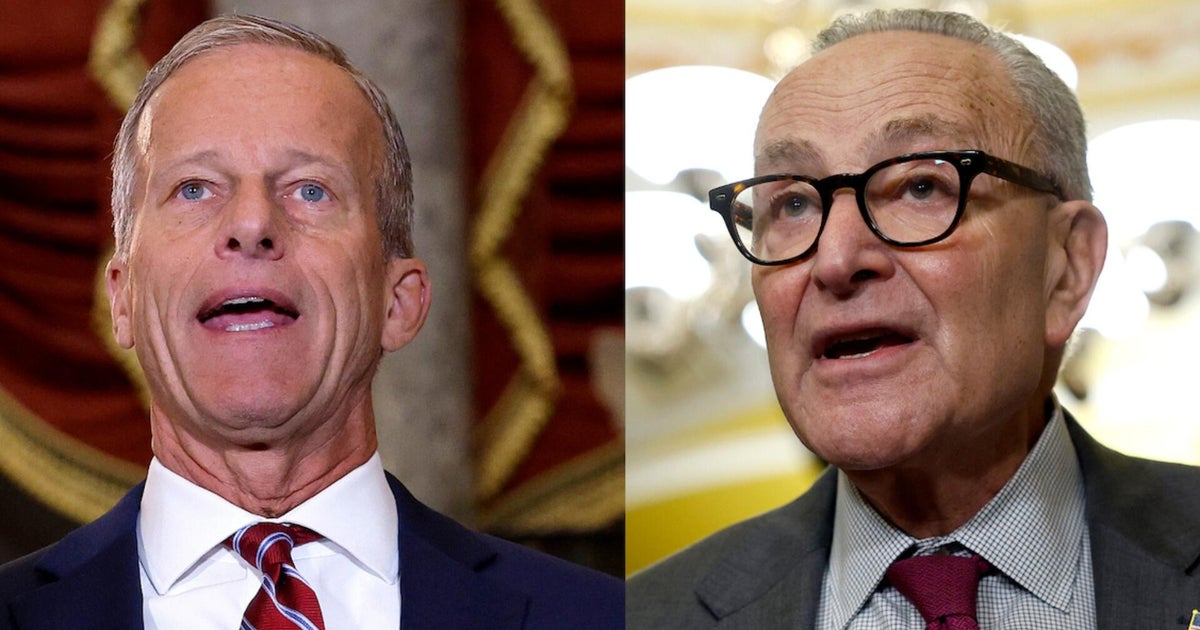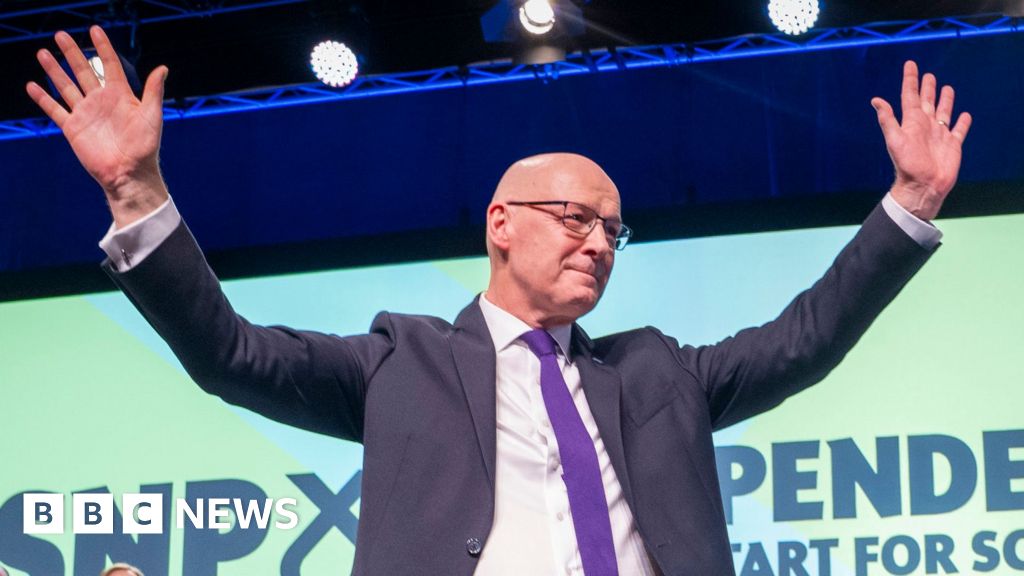 Numerous factors can have a big impact on mortgage rates, and some will have a heftier influence than others.
Spawns/Getty Images
Numerous factors can have a big impact on mortgage rates, and some will have a heftier influence than others.
Spawns/Getty Images
Mortgage borrowers received long-awaited good news in September when the Federal Reserve cut the federal funds rate for the first time in 2025. Even before the Fed's decision, though, the market reacted to the high likelihood of a rate cut, with average 30-year fixed-rate mortgages dropping to 6.13% before the official rate cut was announced. And, while they've ticked back up again slightly, they're still hovering near their lowest levels since late 2022.
Right now, the average rate for 30-year fixed-rate mortgages is sitting at 6.49%. While this rate is higher than it was a couple of weeks ago, it's still significantly lower than the rates seen earlier this year, when many lenders were quoting rates well above 7%. And, with the possibility of additional rate cuts later this month and again in December, mortgage costs could fall even further over time.
However, it's worth noting that the Fed doesn't directly set mortgage rates. While mortgage rate fluctuations often align with the central bank's policy decisions, the connection isn't as straightforward as you might think. In fact, mortgage rates are also strongly impacted by long-term bond yields, and in particular, the 10-year Treasury yield.
So, which has a greater impact on mortgage rates, the Fed's rate decisions or the 10-year Treasury yield? Let's explore how both factors interact to drive mortgage rates.
Find out how affordable the right mortgage loan could be today.
How the Fed rate and 10-year Treasury yield affect mortgage rates
Before comparing the Fed rate and the 10-year Treasury yield, it helps to understand how each one affects mortgage rates. Simply put, both the Federal Reserve's benchmark rate and the 10-year Treasury influence mortgage rates, but they do so in different ways.
For example, when the Fed raises or lowers this rate, it changes borrowing costs for banks, which can, in turn, influence the rates that banks can offer consumers. When the Fed rate is higher, it costs more for banks to borrow, and those higher costs are passed on to customers in the form of higher borrowing rates. And, when the Fed rate is lowered, it becomes cheaper for banks to borrow, meaning that those savings are then passed on to the customer. Thus, the Fed doesn't set mortgage rates, but it sometimes moves the same way as the federal funds rate.
For its part, the 10-year Treasury yield is a long-term indicator of where mortgage rates are headed. When yields rise or fall, mortgage rates often move in the same direction, but don't always match those moves exactly.
Which impacts mortgage rates more: the Fed rate or the 10-year Treasury yield?
The experts we spoke with agree that Treasury yields have the greatest impact on mortgage rates because of the duration. The federal funds rate changes frequently because it's short-term, while the 10-year Treasury yield reflects longer-term borrowing that aligns more closely with how long most mortgages last.
"The 10-year Treasury has the biggest impact on mortgage rates because its maturity is closer to the average life of a 30-year mortgage," says Heather Long, chief economist at Navy Federal Credit Union. "The Fed rate mainly affects short-term borrowing costs and overall economic sentiment, which can indirectly influence long-term yields, but it isn't the primary driver of mortgage pricing," she says.
JD Pisula, CEO of Accolade Advisory, a consulting company that helps credit unions formulate their loan rates, says that the 10-year and even the 7-year Treasury yields are more correlated to mortgage rates for 30-, 20- and 15-year home mortgages.
"This is because when doing the asset-liability management math, the typical average life of a mortgage is somewhere between five and nine years. So, to appropriately fund the mortgage, lenders need to input this cost to borrow funds at a nearly nine-year average life themselves," Pisula says.
Jamie Slavin, mortgage production manager at Ent Credit Union, also says mortgage rates more closely follow the 10-year Treasury yield.
"Mortgage rates typically run about 1.5% to 2.0% higher than the 10-year Treasury yield," Slavin says. "That's because investors who buy mortgage-backed securities compare those returns to what they can earn from Treasuries with similar terms.
According to Slavin, mortgage rates can react quickly when Treasury yields move.
"Rates move in near real time with the 10-year Treasury yield as both are driven by investor demand in the bond market," Slavin says. "A lender can reprice within the same day if yields spike or drop considerably. With the Fed, by the time they actually make a move, the bond market has already priced in the expectation weeks or months ahead."
The Fed rate and the 10-year Treasury yield can impact mortgage rates on a market level. But as Slavin explains, they're not the only market-level factor at play.
"The 10-year yield and mortgage-backed securities market are key components, but so is any relevant inflation, economic, or geopolitical data and influence."
There are also institutional and borrower-level factors that influence the mortgage rate you may receive on a mortgage loan.
"Institutional factors are a mix among cost of funds, liquidity and balance sheet management, and operational efficiencies," Slavin says. On the borrower side, factors such as your credit score, loan type, and loan-to-value (LTV) ratio can also affect your rate.
Explore your top mortgage loan options and lock in a rate now.
The bottom line
These experts agree that 10-year Treasury yields have a more direct impact on long-term mortgage rates, including 30-year fixed loans. Mortgage investors and lenders use those yields as a guide when setting rates for homebuyers. Still, the Fed rate isn't irrelevant.
"The federal funds rate affects short-term borrowing costs as well as influences investor sentiment and expectations," Slavin says.
When the Fed adjusts its rate, it can influence what borrowers pay on shorter-term lending options, such as home equity loans and HELOCs. Keep in mind, though, that mortgage rates vary by lender as each institution prices its rate differently. The Consumer Financial Protection Bureau (CFPB) recommends getting loan estimates from at least three lenders to help you find the best balance of rate and terms.
Edited by Angelica Leicht


















































